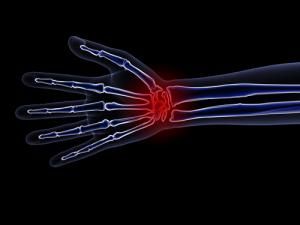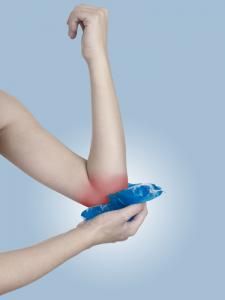
Repetitive Stress Injuries: Why Ergonomics Matters

Repetitive stress injuries (RSI) occur by repeatedly performing the same or similar movements over a period of time. This can ultimately result in injury to the soft tissues, such as muscles, nerves, and tendons. We know these injuries by various names – tennis elbow, tendonitis, bursitis, carpal tunnel syndrome, and, more recently, texting thumb. With over 25 bones, our hands can be one of the most common joints affected by RSI.
Symptoms of repetitive stress injuries include sore, achy joints, a tingling or numbness in the area, and weakness. RSI injuries typically develop over time, and get worse as time goes on and the movements are repeated again and again. RSI injuries are not life threatening, but they can be painful and incapacitating. In this article we’ll look at RSI injuries in the workplace, how they affect staff and how they can be prevented & mitigated.
Reducing Repetitive Stress Injuries
 RSI risks can be reduced in the workplace through the science of ergonomics. Ergonomic science involves the design of the workplace to alleviate repetitive stresses, and to consider the capability of the employee to perform the job; as well as identifying what limitations may exist to prevent him from doing the job. Workers are protected against RSI by Canadian & provincial law and guidelines for the employer to prevent RSI.
RSI risks can be reduced in the workplace through the science of ergonomics. Ergonomic science involves the design of the workplace to alleviate repetitive stresses, and to consider the capability of the employee to perform the job; as well as identifying what limitations may exist to prevent him from doing the job. Workers are protected against RSI by Canadian & provincial law and guidelines for the employer to prevent RSI.
What steps should be taken to reduce repetitive stress injuries in the workplace?
Step 1: Identify & Prioritize Risk
The first step is to identify and prioritize the jobs with the highest risk of producing RSI. This could typically cover jobs with high task iteration, such as typing and working on a computer. Jobs with strenuous exertions, such as repeated lifting, also hold a degree of risk. The identification process should also look for jobs where the employee is put into an awkward position, such as repeated twisting or bending.
Step 2: Risk Analysis
Once these jobs have been identified and prioritized, a team should be assembled to conduct an ergonomic analysis. Here, they will conduct extended evaluations of the jobs, looking for movements and conditions that could contribute to RSI. Discussions should be held with the affected employee to help identify these conditions, as they may not come up during the actual visual evaluation.
Step 3: Develop Solutions for At-Risk Behaviour & Activity
 Once identified, the team should work to identify the best solutions to the at-risk behaviors. This may involve changes to the work station design and/or equipment, employee education about proper lifting techniques, setting up time limits and rotations for the repetitive jobs, or developing engineering solutions. There are certain tools available on the internet to assist with this evaluation, including lifting calculators, body movement assessment tools, etc.
Once identified, the team should work to identify the best solutions to the at-risk behaviors. This may involve changes to the work station design and/or equipment, employee education about proper lifting techniques, setting up time limits and rotations for the repetitive jobs, or developing engineering solutions. There are certain tools available on the internet to assist with this evaluation, including lifting calculators, body movement assessment tools, etc.
Step 4: Implement Solutions & Alternatives
The next step in the process is to implement the solutions. This should also be done based on the prioritized situations identified earlier. While there may be a cost to this implementation, it must also be recognized that there is also a cost to not implementing a solution. If the situation is not resolved, it could likely lead to employee frustration and lower productivity, and, in the worst case, an injury with significant medical treatment costs.
Step 5: Secondary Evaluation
The final step in the process is a secondary evaluation to determine if the implements solutions were effective. In some cases, making a change may solve one issue, but at the same time cause another one. The team should review the process to make sure the chances of RSI have been reduced or eliminated.
How Advanced Consulting & Training Can Help
Enlightened management will view ergonomic improvement as an opportunity, not as a cost. Safer, productive, and engaged employees will yield greater organizational benefit than the costs of solution implementation.
At Advanced Consulting & Training, we’ve helped numerous organizations with RSI mitigation & prevention as a component of an overall health & safety program.
For more information on implementing a repetitive stress injury mitigation program in your workplace, contact us today.


